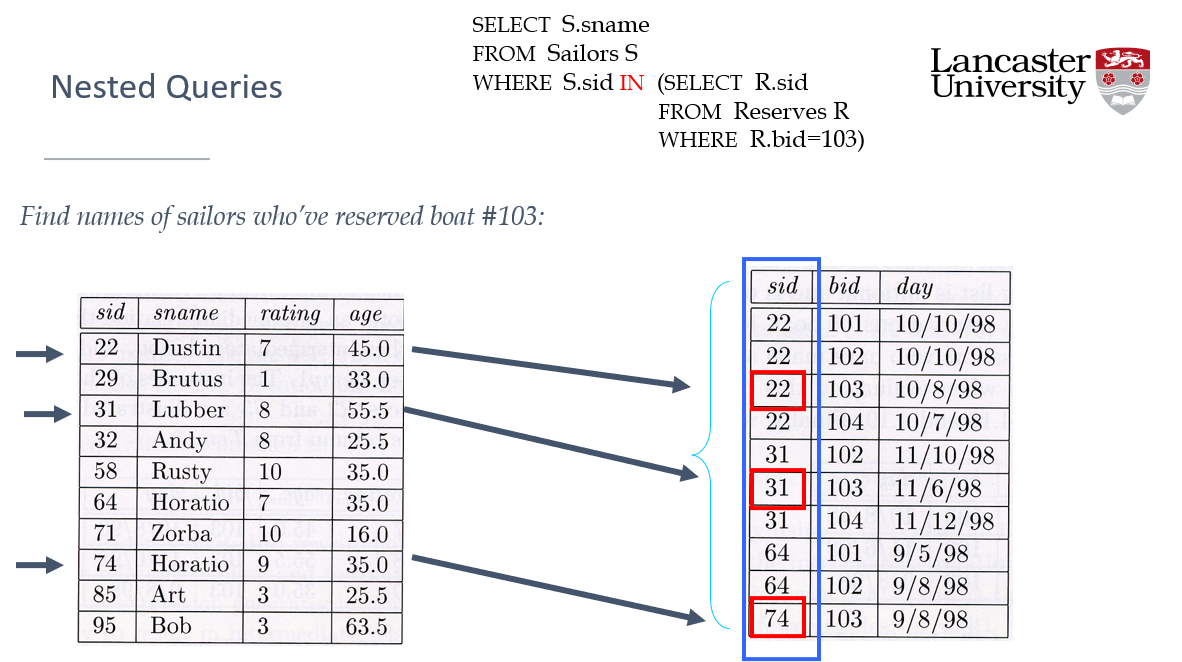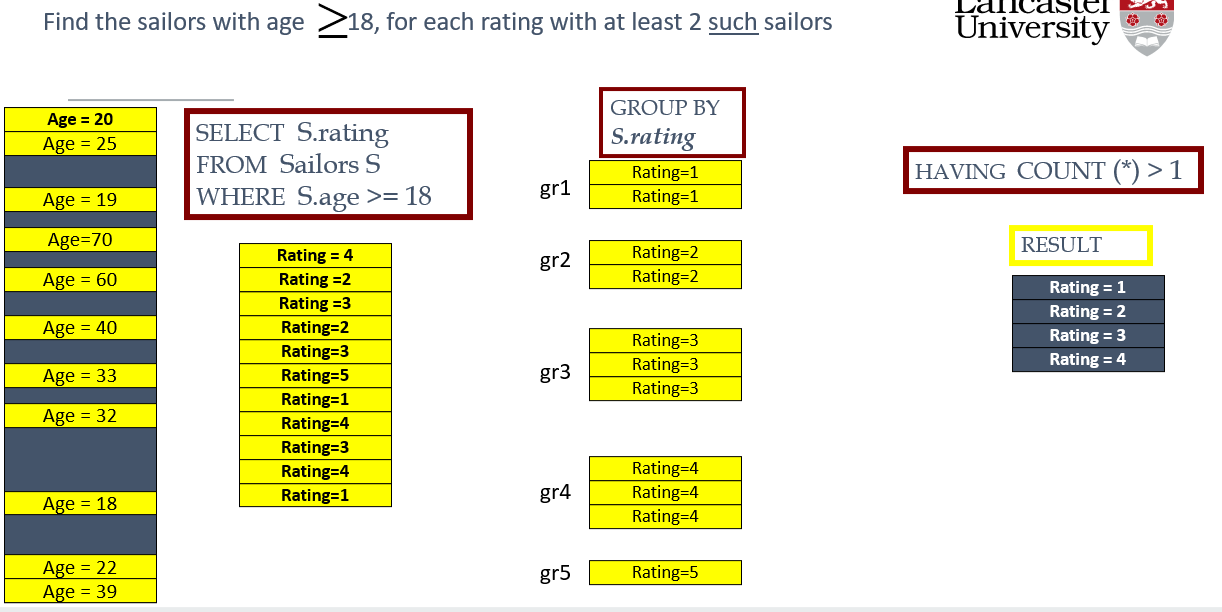W5 - SQL Finish + Transactions & Concurrency Control
1/8
There's no tags or description
Looks like no tags are added yet.
Name | Mastery | Learn | Test | Matching | Spaced |
|---|
No study sessions yet.
9 Terms
Nested SQL queries
Nesting a query in another query

SQL Operators
Use IN and NOT IN
EXISTS returns TRUE if the set is nonempty (NOT IN does the opposite)
UNIQUE can be used, but not for checking tuple-by-tuple, only for an entire subquery. (Can also use NOT UNIQUE)
ANY and ALL
ANY returns true if there exist tuples which obey condition
ALL returns true if all tuples obey condition
SQL Aggregate Operators
COUNT (*) - Counts everything returned
COUNT ( [DISTINCT] A ) - Counts set
AVG ( [DISTINCT] A) - Returns average of a set
SUM ( [DISTINCT] A) - Finds sum of set
MAX (A) - Finds highest value
MIN (A) - Finds smallest value
GROUP BY, HAVING
GROUP BY sorts a set by an attribute in ascending order
HAVING further sorts a set by a value of that attribute

What counts as a transaction?
Each movement of money
If PLAYER1 gives PLAYER2 100, that is one transaction
PLAYER1 bal -100
PLAYER2 bal +100/\ One transaction

Concurrency
Interleaving execution of operations such as money transfer and account sum
Each transaction is seen as a sequence of read and write
Schedules
List of actions from a set of transactions
No guarantee that T1 will execute before T2 if both are submitted concurrently

Types of schedules
Complete - A schedule that contains an abort or commit action for every transaction that occurs in the schedule
Serial - A schedule where the actions of different transactions are not interleaved
Conflicting Operations
Two operations conflicting if:
They belong to different transactions
They operate on same data item
At least one of them is a write operation